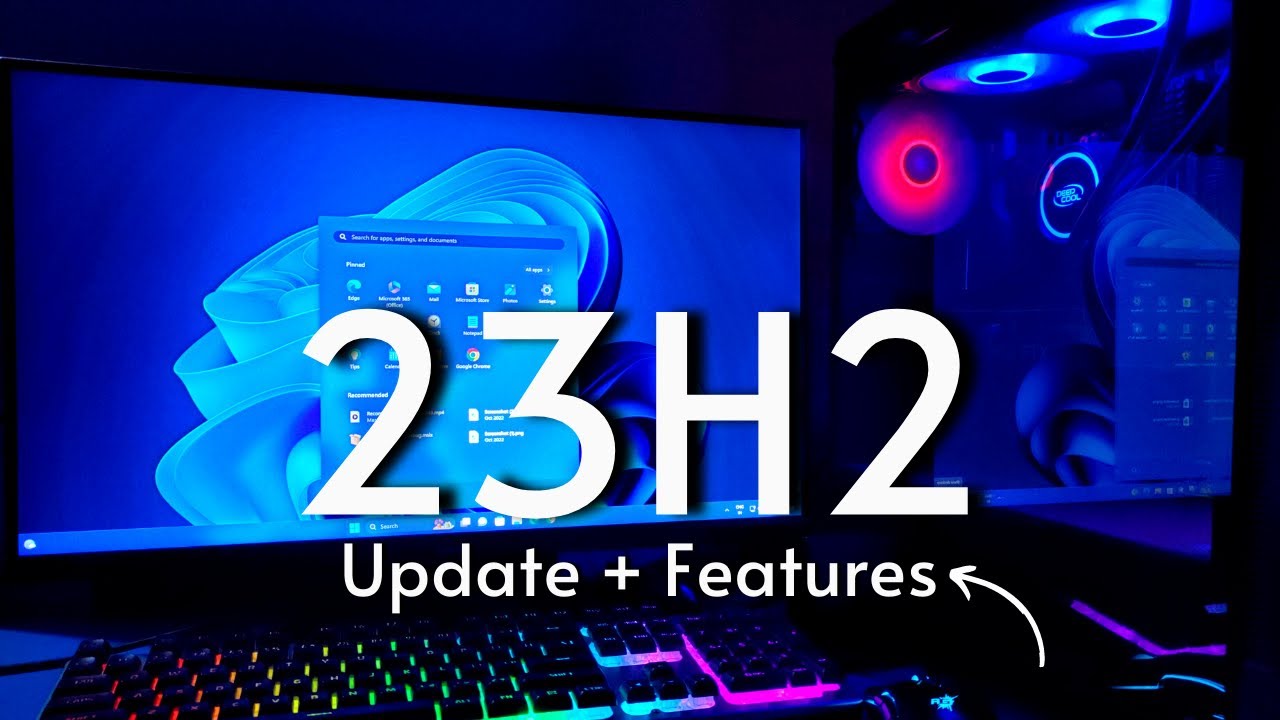Gaming performance is being impacted by the Windows 11 23H2 upgrade, although Microsoft claims there is a fix.
At least for some users, the workaround appears to be effective.
What was that just now? Early this year, Microsoft released the Windows 11 23H2 update, which included an extensive range of new features and bug fixes. Even after doing a clean install, several users who installed the update are now saying that it significantly reduced the performance of their PC.
Neha thakur, an impacted user, raised her complaints on the decreased performance on the official Microsoft forums. She claims that the issue first surfaced on his 2020 HP Pavilion laptop, a high-performance machine that could run most games at high frame rates prior to the most recent upgrade.
Neha stated that the laptop could achieve over 130 frames per second when playing AAA games like Forza Horizon 5 at high settings, and between 80 and 90 frames per second when playing games like Valorant, CS: GO, and Grand Theft Auto 5.
She did, however, begin to notice sudden stutters and sharp reductions in frame rate in the same games following the 23H2 upgrade. She highlighted that since the device showed no change in operating temperature after the update, the issues were not caused by thermal throttling. Furthermore, the problems are probably software-related because the laptop is always used with a cooling pad and in an air-conditioned space.
Karam is another affected user, claiming that in nearly all benchmarks, the 23H2 clean install performs 5–8% slower than 22H2. Moreover, random stuttering and other performance-related problems are occurring in games. Although the complainant initially believed that reverting to version 22H2 was the only method to restore optimal performance on his PC, Microsoft has subsequently proposed a solution that may resolve the problems without requiring the update to be uninstalled.
According to TechSpot, Microsoft provided a thorough fix in response to both individuals. The first part of the fix involves executing multiple Powershell commands to reset Windows Defender, therefore you must be familiar with using the command line.
So, to fire up PowerShell, just right-click the Start button (or press the Windows key + X) and click on ‘Windows PowerShell (admin).’ While it’s not clear that you need admin mode – you could just run the plain ‘Windows PowerShell’ option – it might not hurt to use it.
Once open, run the following two commands in PowerShell (type them in and press enter). Firstly:
Set-ExecutionPolicy Unrestricted
And then:
Get-AppxPackage Microsoft.SecHealthUI -AllUsers | Reset-AppxPackage
That second command resets Defender, and you then reboot your PC.
The instructions then say when rebooting you should head to your BIOS and ensure that CPU Virtualization is enabled. Rummaging in the BIOS is the slightly trickier bit – as BIOSes are all differently laid out and have their own interfaces and quirks (consult relevant help resources from your motherboard vendor) – but many PCs may already have this turned on anyway, so you might not need to do it.
Finally, when back at the Windows 11 desktop, fire up Windows Security (type that in the search box, and open the app that pops up), select ‘Device Security’ in the left-hand panel, and in Core Isolation settings you should turn on Memory Integrity. Again, you’ll need to reboot your PC.
After that, you have to turn on CPU virtualization in the BIOS and reboot. After overcoming those two obstacles, you must go to options, select Windows Security, and then enable Memory Integrity under the Core Isolation options. Hypervisor and Virtualization Security will be Enabled after you reboot after making those adjustments, which fixes the problem based on the original posts.
As of right now, AMD CPUs appear to be the main target of the problem, encompassing both more recent and older chips, such as the Ryzen 7000 series.
Although the exact issue is unknown, it is possible that AMD will issue a microcode update shortly to fix the problem. Say a silent prayer to the silicon gods and use the aforementioned remedy if you’re experiencing poor CPU performance in games or apps. If you currently have an AMD CPU and haven’t upgraded, wait till all is clear.


